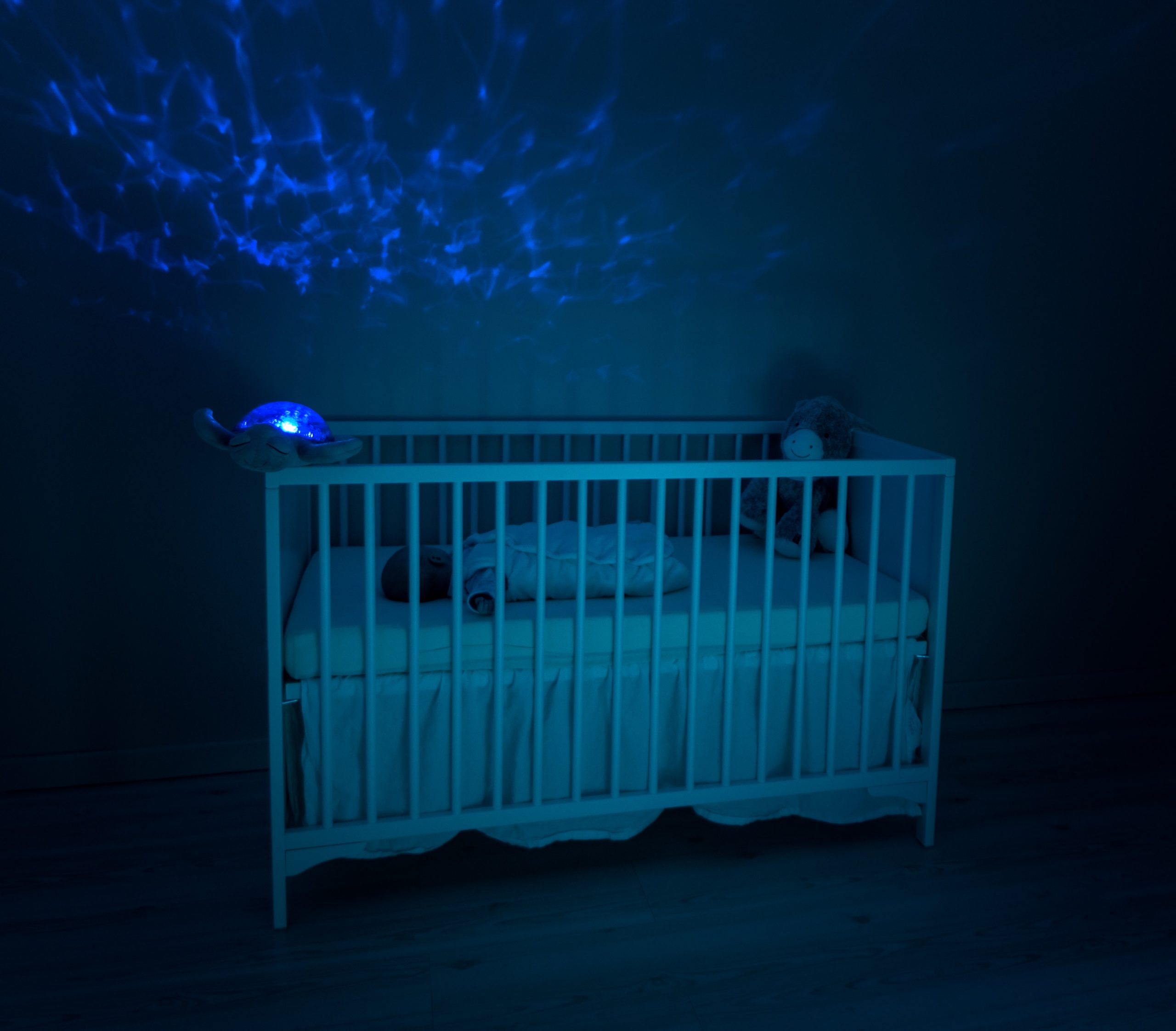You will never see me out past 6:30pm.
If we’re at happy hour, I’ll nurse half a glass of wine, gulp down a water, and sneak out by 6pm.
If you’re having a party, I’ll politely decline and send a gift.
Because at 6:30pm, I’m whipping up dinner. At 7:15, I’m pretend-flossing the kid’s lovey, real-flossing the kid, brushing his teeth, and firing up the white noise machine. Fifteen minutes, a new diaper, fresh pajamas, and a good night kiss later, my husband and I are closing the door and starting our evening.
My toddler is 2.5 years old. This has been our routine for 2.5 years. And the thing is… I wouldn’t have it any other way.
My parents raise their eyebrows at the schedule they deem too rigid. But my friends often ask: How are you so well-rested? How did you sleep train your kid? And why did you start so early?
My short answer is always the same: We got lucky with a good sleeper but we started sleep training when he was six weeks old, and we almost never deviate from the schedule.
The longer answer is this…
Because I need my space.
When I was two weeks postpartum, recovering from a c-section, and nursing my son every two hours around the clock, I needed any break I could get.
My body was no longer mine.
It was a bloated, stitched-together carcass whose only purpose was to make milk for someone else. My mind was no longer mine either. It was taken over by some lady who memorized every milliliter eked out from her breast pump.
I mourned the loss of my old life and I felt woefully unqualified to be someone’s mom. I probably needed therapy, but instead, I decided I needed to reclaim some part of myself.
I started by reclaiming my time.
So I pored over mom blogs and Instagram accounts and Facebook groups and late-night texts from mom friends. I finally found the last useful resource: A book called 12 Hours’ Sleep By 12 Weeks Old.
This gave me a plan for how to get my evenings back.
And it worked.
Now I’m sharing this plan with you.
Set the Path at Six Weeks Old
The overall philosophy of that book is this: A baby needs to weigh at least 12 pounds in order to metabolically sustain themselves for a 12-hour period. And that usually happens around the time the baby is 12 weeks old.
So you may as well make it easier for yourself and set the foundation early on.
I was lucky enough that my baby slept for as many hours as he was weeks old. By six weeks old, he was doing six hour stretches of sleep at night.
At this point he was on three to four naps per day, napping in his stroller, in the living room, in his bassinet in his room with the blinds open.
But at bedtime, nighttime sleep was different.
My husband and I decided bedtime was at 7pm. We created rituals to indicate the evening:
- Lights were lowered and sounds were softened. We closed the blinds and dimmed the lights. We turned off the TV, and any music or podcasts playing were turned down.
- We were less social. No more singing nursery rhymes and engaging our son in conversation. We did this to signal that we meant business. It was bedtime.
- We put him in his bassinet in his own room. We created a consistent, cool and dark sleep environment. We had a video monitor set up so we could keep an eye on him.
Oh, and we turned on a white noise machine, for all his naps and nighttime sleep. Which our son still uses today.
At this point, my husband and I were still sleeping in the same room as our son. We’d tiptoe in a few hours later when it was our own bedtime.
Allocate Ounces Throughout the Day
Some commonly accepted advice is that Baby needs to have a big meal (a long nursing session or a big bottle of milk) right before bedtime.
While it’s true that Baby needs to eat before then, the bigger truth is that getting full starts first thing in the morning. Baby needs lots of milk all throughout the day — not just an extra helping at dinnertime.
So as you begin sleep training, slowly reallocate those ounces of milk from the evening to earlier in the day.
Does Baby normally have a 3-ounce bottle at 2am and a 3-ounce bottle at 7am, their first official bottle of the day?
Reduce an ounce from that nighttime bottle, and add it to the morning one so those two bottles become: a 2-ounce bottle for 2am, and a 4-ounce bottle at 7am.
Do that for three days. Then reallocate ounces again.
Turn that 2am bottle into a 1-ounce bottle, and add that “lost” ounce to their second bottle of the day, say at 10am. Do that for three days, and reallocate ounces until that 2am bottle is gone. If Baby wakes up at 2am, give them a pacifier, then put them back to bed.
For us, we were lucky enough that our son didn’t notice the 2am bottle was gone. He simply slept through it.
This process is different for moms who exclusively breastfeed — an experience I’m reluctant to speak to because it wasn’t my own. So I’ll keep it brief. The guidance is that instead of thinking in ounces, think in time spent breastfeeding: Decrease 10 minutes of breastfeeding at 2am, add 10 minutes to breastfeeding at 7am. Ideally, your supply will naturally reallocate.
Don’t Let Your Baby Cry It Out
Alright, this isn’t actually advice for you. This is just what I did when my son was 10 weeks old, sleeping 10-hour stretches, and no longer needed a nighttime bottle.
The pain a mom feels when her small baby is crying is unbearable. It’s not a, “Gee, that sound is annoying,” pain.
That “pain” is a biologically-induced anxiety we’re genetically programmed to feel when our baby is crying.
When my son cried, I felt it in my soul.
His screams grabbed my heart, squeezed it, and pushed it up into my throat. My pulse raced. My brain fogged up. My breasts filled with milk and panic. And before I knew it, I’d be running down the stairs at full speed so that my knees wouldn’t buckle beneath me. Baby in arms, I’d shush him until he calmed down again.
So no, crying it out was absolutely not an option for me.
First, I would rock him in my arms. I quickly became cognizant of not wanting to exert more energy than I needed to. Standing and rocking became sitting and rocking, which quickly became hunching over the bassinet, holding the pacifier in my son’s mouth. In his room, in the dark.
…And Don’t Give in, Either
For as much as I say I couldn’t bear to let my son cry it out, I refused to change course. After all, you do not negotiate with terrorists.
When my son began crying, I’d wait five minutes before going downstairs to soothe him.
When he peacefully but stubbornly lied awake, I vowed not to engage with him lest he think it was playtime.
When he had his eyes closed but was unable to sleep, I held that pacifier in his mouth, long after my forearm, locked in position, lost all feeling.
And when he had his eyes open, his pupils darting around the room, I sneakily shaded his eyes with my cupped hand — the way bird owners drape a blanket over a squawking parrot’s cage.
Once You’ve Made It to 12 Hours, Maintain It
No matter how good of a sleeper your baby is, sleep training is hard. Once you’ve achieved this 12-hour nightly miracle, it needs to be maintained. It’s the same as getting fit or eating healthy — it’s an ongoing process, not a one-and-done task.
And it simply wouldn’t be fair to your baby to bring them to a dinner party past 9pm and still expect them to have a normal, restful night.
Save for the few occasions like Christmas Eve, when we had our five-month-old son awake until 9pm to play with his grandparents, aunts and uncles, we’ve stuck to our bedtime routine.
Over these past two-and-a-half years, we maintained our social lives, just at a modified schedule. We’ve had friends over for dinner. We hosted Game of Thrones watch parties. I resumed my home bartending hobby. I worked, read books, enjoyed the minutiae of staring at my phone, all the while sleeping eight hours a night.
And I reclaimed a part of myself.
A special thank you to the kindred spirits who offered me their generous support with my first essay at Write of Passage: Charlie Bleecker, Kyle Bowe, Kyle Weber, Steven Ritchie, Daniel Sisson, Louie Bacaj, Efty Katsareas, Alexandra Zamora, Shirley F. Rivera, Santhoshi DB, and Gabriel Hamilton.
Featured image by Marie Despeyroux





One Comment